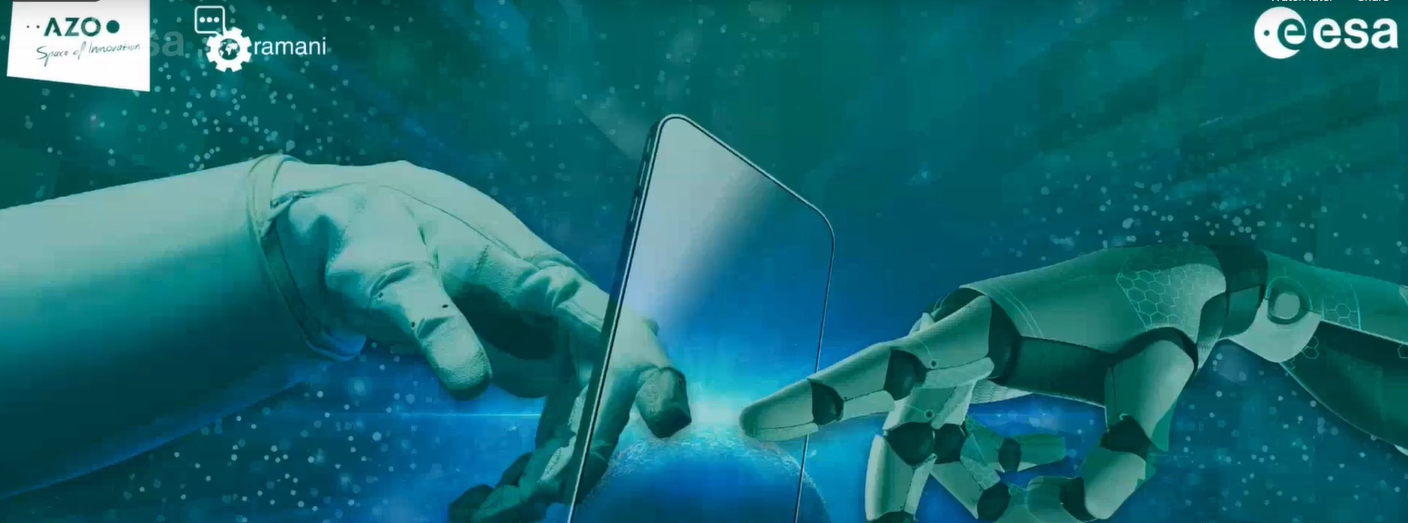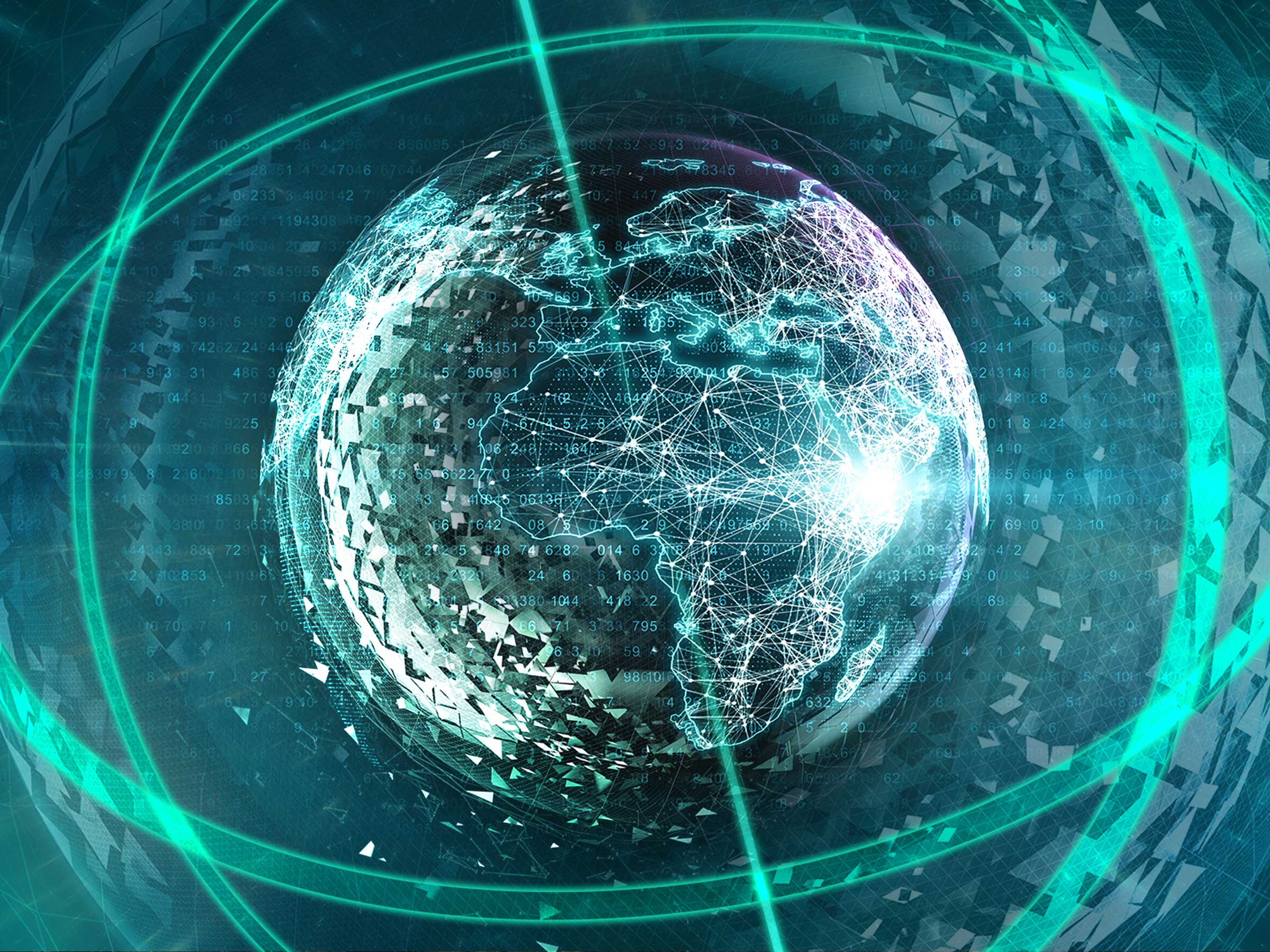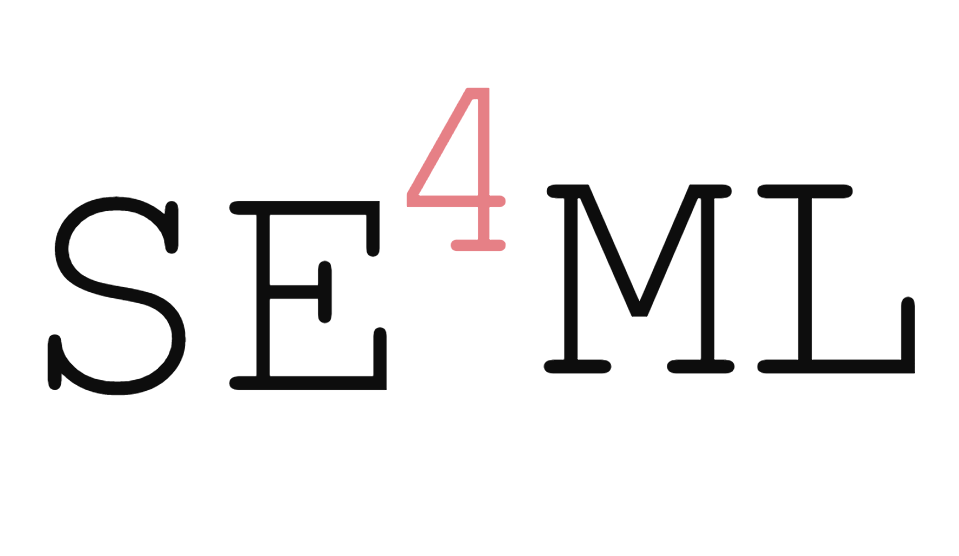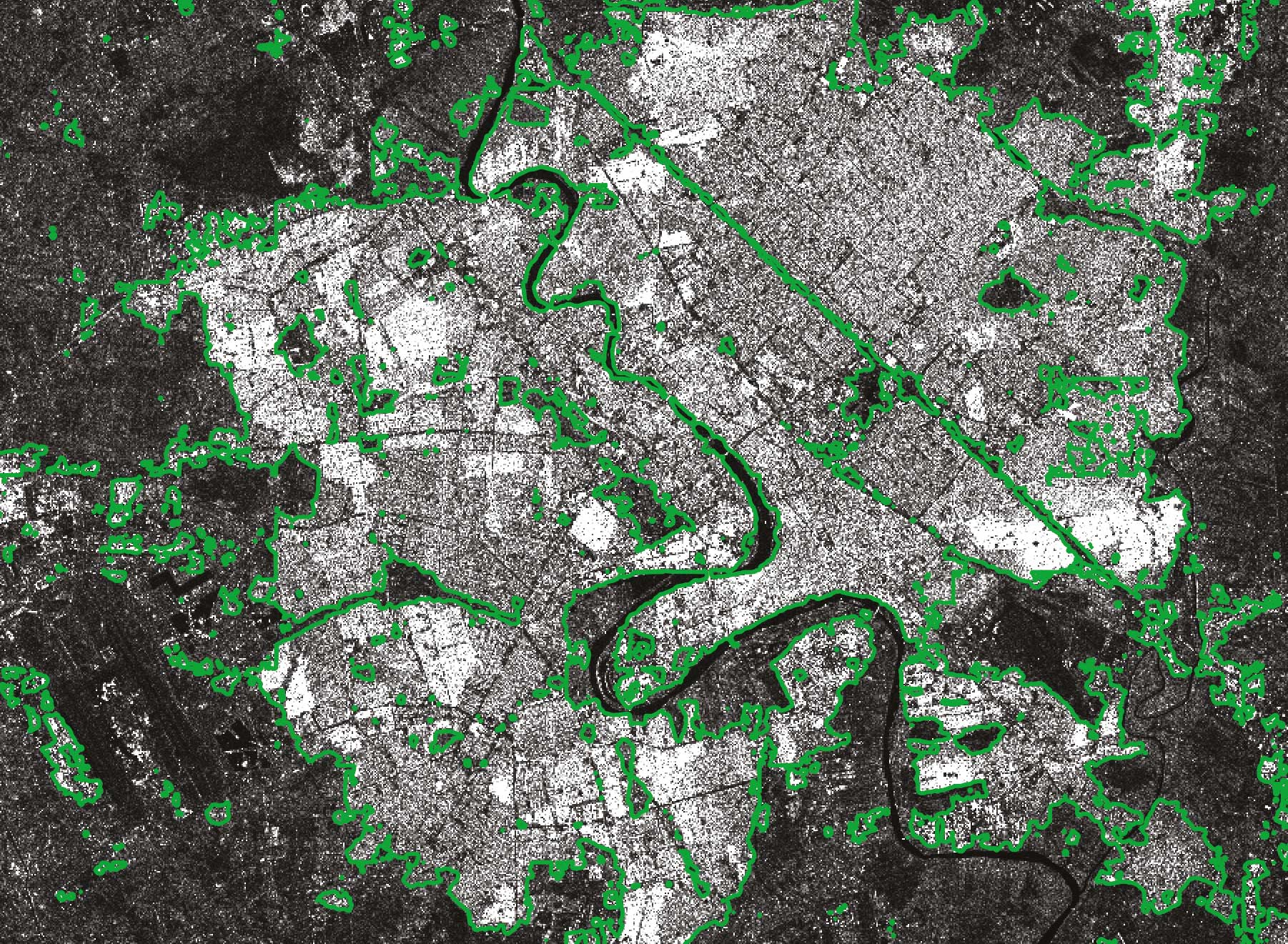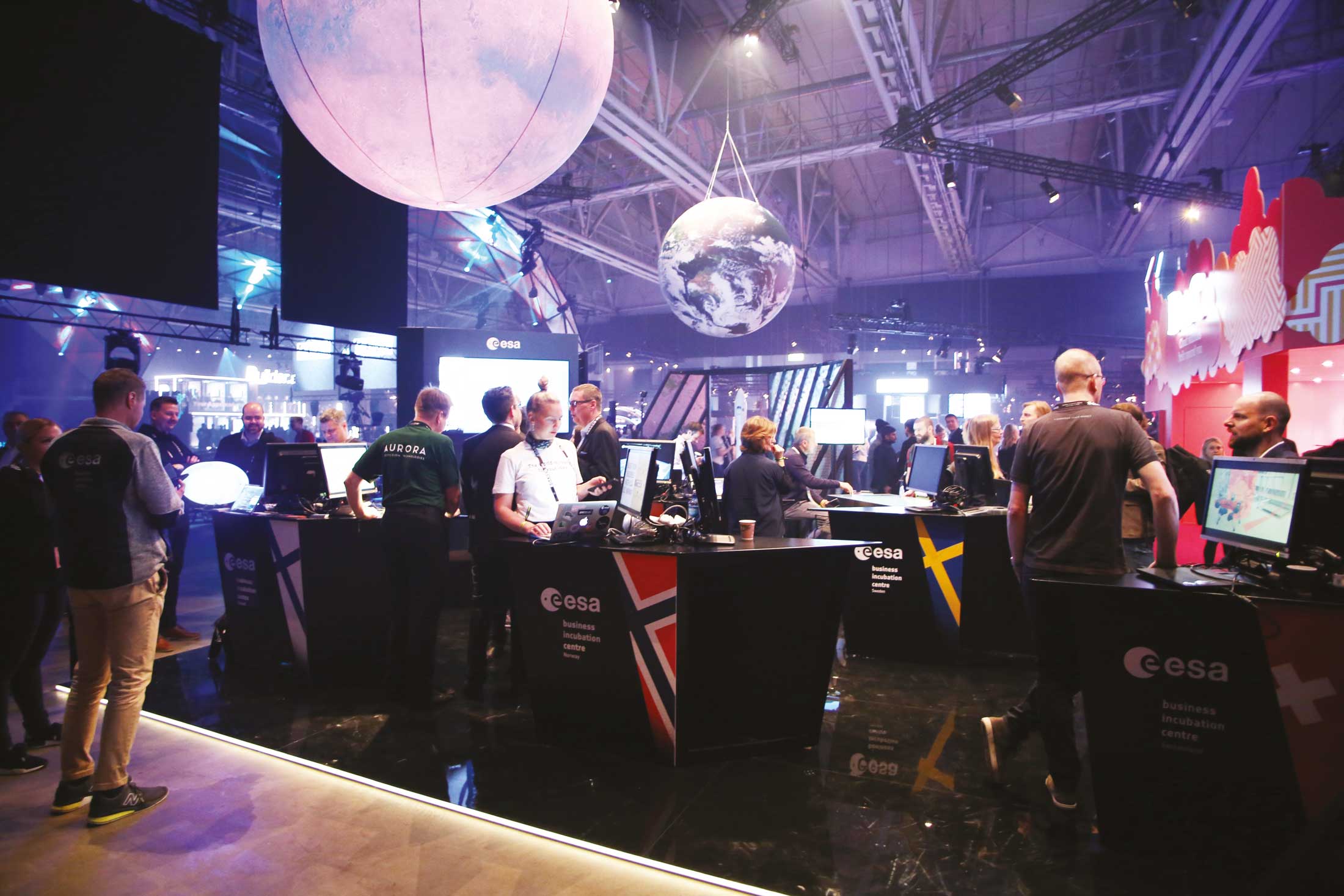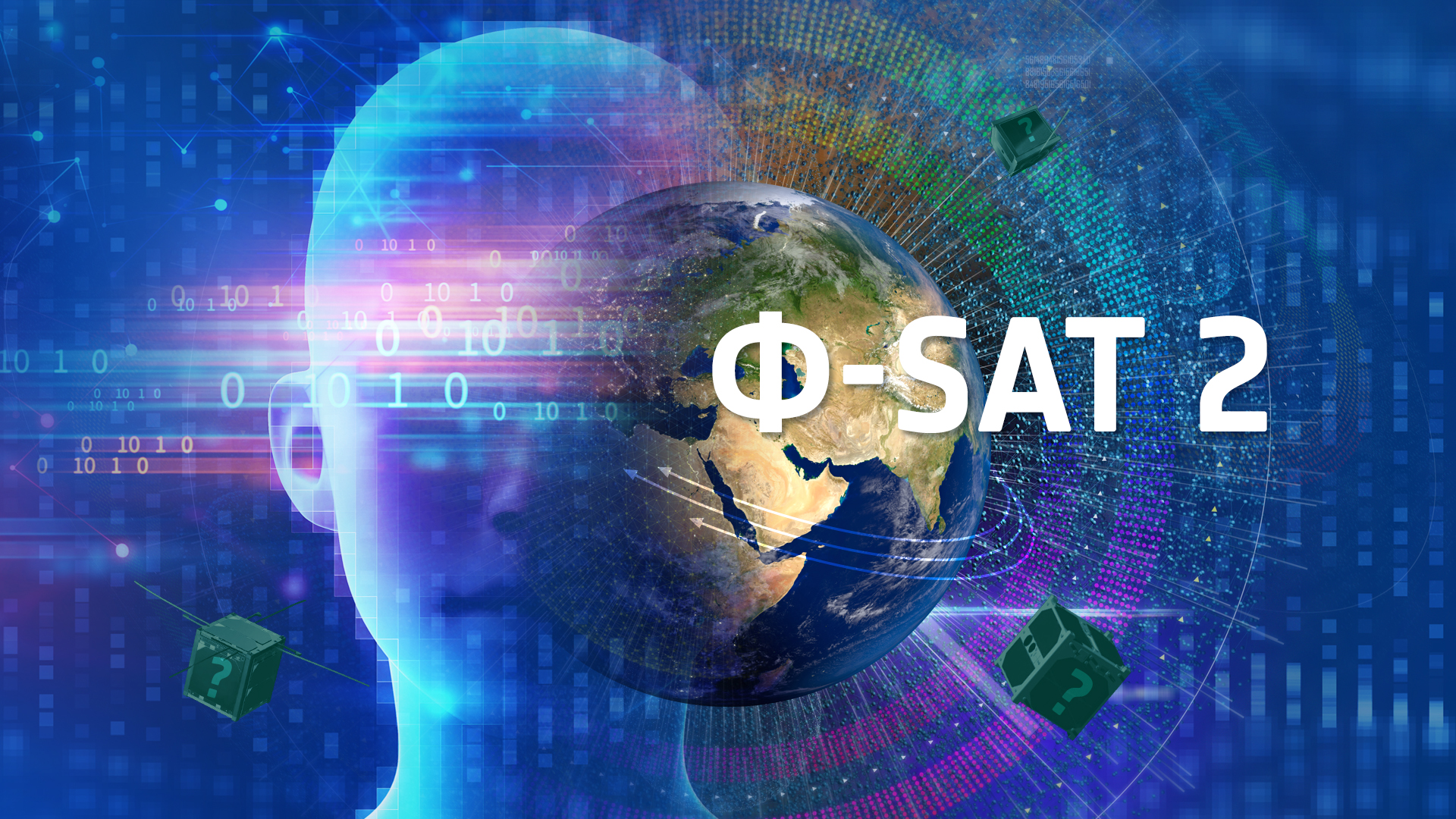As part of its initiative to promote the development of radically innovative technologies such as Artificial Intelligence (AI) capabilities onboard Earth Observation (EO) missions, the European Space Agency (ESA) announces an opportunity for the EO community to present cubesat-based ideas to be assessed for a potential Φ-sat-2 mission. This opportunity is open to “economic operators” – including, among others, industry, research institutes and academia – from the ESA Member States plus Canada and Slovenia participating in the FutureEO-1 Programme, which is tabled for subscription at ESA Ministerial Conference Space19+.
The Φ-sat-2 mission will be used to demonstrate the AI enabling capability for new useful innovative EO techniques of relevance to EO user communities. The overall objective is to address innovative mission concepts, fostering novel architectures or sensing that enable to meet user-driven science and/or applications by means of onboard processing. The latter will be based on state-of-the-art AI techniques and onboard AI-accelerator processors.
Building upon the experience from the development of Φ-sat-1 experiment, the Agency is soliciting ideas for missions to be implemented according to ECSS (European Cooperation for Space Standardization) standards and requirements tailored for cubesat missions .
Mission candidates will be selected by the Agency on the basis of their innovation and capability to demonstrate the disruptive potential of onboard AI for EO according to the criteria defined in this Call, as explained hereafter.
– Access Call for Proposals for all the information regarding the Call.
– Access AD and RD for Call for Proposals
– Proposal Submission: please register sending an email with your full name and company/institute details to PhiSAT2call@esa.int. You will receive credentials to access the portal in order to upload your proposal.
– Submission deadline: 31st January
For question or clarification please mail PhiSAT2call@esa.int
FAQ:
Q.1: What is the outcome of the 12-month phase? A satellite delivered to the launch site with a launch contract in place, operations or a satellite launched and operational on orbit?
A.: The second phase (Mission Development Phase) of the project does not last 12 months. As specified in the call:
“The second phase (Mission Development Phase), led by a mission integrator, will be dedicated to the design and development of the space and ground segments, launch, in-orbit operations, data exploitation and distribution”
And also:
“The schedule for the development of the mission shall last a maximum of 12 months from the start of the Mission Development Phase up to the satellite readiness for the delivery to the launch service provider. Nominal operations shall last a minimum of 12 months after satellite commissioning (including payload and AI application) and include data downlink, processing, storage and distribution.”
Hence, the second phase will last up to 12 months to the satellite readiness for delivery to the launch service provider
+ the launch window
+ commissioning
+ 12 months of operations including data downlink processing, storage and distribution
Q.2: Is there a page and/or size limit to the proposal?
A.: There is no requirement regarding the length of the proposal. Nonetheless ESA expects a concise and effective proposal;
Q.3: Is there a limit to the number of partners in the consortium?
:A.: No there is no limit in the number of partners in the consortium. It can be one or more economic operators.
Q.4: Regarding the procurement of launch services, do I understand correctly that this is something we should procure ourselves, i.e. look for service providers ourselves, not just include the budget for the service?
A.: Correct. The launch service procurement is part of the project. ESA expects the consortium to come up with a suitable and complete solution, including the direct provision of the launch service for the PhiSAT 2 mission.
Q.5 Finally, we would just like confirmation that we understand correctly that the proposal must include both the Mission Concept as well as Mission Development phase, i.e. the consortium must propose a mission for a specific application and user, and the development of satellite platform, instruments including AI algorithms and corresponding HW, and ground segment for operations and data dissemination during minimum 12 months.
A.: Correct. The proposal shall be complete and include both phases the Mission concept phase and the Mission Development Phase, which as stated in the call include space and ground segment development, launch, satellite commissioning (including payload and AI application) and a minimum of 12 months of mission operation, payload data download elaboration and dissemination.
Q.6:We have some questions regarding the call for proposals, as it is not clear to us;
What is expected in terms of the length of the proposal?
The funding rate is not stated anywhere. Will this be 100% funded?
Do you prefer cross boarder consortia or could a single country consortium apply?
A. There is no requirement regarding the length of the proposal. Nonetheless ESA expect a concise and effective proposal.
We confirm that the funding source is the FutureEO programme and the project will be 100% funded.
There is no requirement related to cross-border consortia (therefore a consortium from a single country participating in the programme is admissible).
Q.7: We are considering submitting a proposal for the Phi-Sat-2 mission. Currently we are looking for partners in order to make the consortium. We would like to know what are exactly the ESA Member States that are part of the FutureEO-1 Programme.
Is the FutureEO-1 Programme subscribed by all countries or just some countries?
For example, can we make the consortium with one company from the UK?
A. As stated in the Φ-sat-2 Challenge of ESA, this opportunity is open to “economic operators” – including, among others, industry, research institutes and academia – from the ESA Member States plus Canada and Slovenia participating in the FutureEO-1 Programme.
Please find hereafter the list of those Member States which subscribed to FutureEO-1.
Austria, Belgium, Czech Republic, Denmark, Finland, France, Germany, Greece, Hungary, Ireland, Italy, Luxemburg, Netherlands, Norway, Poland, Portugal, Spain, Sweden, Switzerland, United Kingdom, Slovenia, Canada.
Please do not hesitate to contact us in case of need of further clarification.
Q.8: ECSS compliance seems to be a must, which may be an overhead for cubesat development, that should follow a lightweight development (cheaper and faster). Two platform suppliers which we spoke to about this call for proposals tell us that ECSS compliance is the big show-stopper for them, which makes it difficult for us to set up a good consortium. Can you clarify is it really a must and if it is, which ECSSes should be followed? Are IOD CubeSat ECSS the same as standards tailored for CubeSat missions?
A. The Applicable standard to the call are mandatory. The requested ECSS standards are based on the tailoring and experience acquired by the “Cubesats Systems Unit in the Technical Directorate, D/TEC, at ESTEC”
Q.9: Is it necessary PSS forms and signatures from high-ranking legal representatives now (e.g. University sector, DLR administration) or is this supposed to happen only with RFQ? Submission include budgets and ususally budgets require signatures from high-ranking officers.
A.: No, it is not necessary to submit PSS forms at this stage. As specified by the call under point 9, ESA expects “Detailed costs for all phases”, meaning that the detailed costs shall be reflected in the proposal to this call, but no necessarity with the granularity of PSS forms. Following the ranking of the proposals, ESA will issue a Request for Quotation (RFQ) to the consortium whose proposal has been ranked as the best. That RFQ will provide detailed Instructions, and will include the request for PSS forms.
Q.10: We need to get the contract forms in order to provide them to our admin services. We would need to provide those documents before starting our proposal. Therefore, we will appreciate if you could retrieve them to us.
A.: As specified in the call “The ideas submitted in reply to the Call will be reviewed and ranked by ESA (…). The Agency will then release a Request for Quotation (RFQ) to the consortium whose proposal has been ranked as the best“. Therefore, a first draft of Contratual matters, including clauses and conditions, is not provided in this Call, but it will be part of the RFQ instructions at a later stage.
Q.11: The budget is low to gather a typical 5 or 6 partners consortium within the Mission concept phase (equivalent to the first months and 240kE max). In our case most of the partners would not be involved in the main instrument development, but rather in other support areas. Can we progressively add more partners only for the Mission development phase (2.5 ME)?
A.: As specified in the Call, the activity will be implemented through a two-phase contract. In their proposals, the bidders shall provide a complete description of the consortium that would perform the activity. It shall be indicated for each company whether they would participate to both mission concept phase and mission development phase or only to on of the two phases. For each company, complete work packages, cost breakdown and description of the background and experience of companies and key personnel shall be provided. Although this is not a strict requirement, it is recommended to involve all members of the consortium already in he mission concept phase in order to ensure and end-to-end perspective and to allow a smooth transition to the subsequent mission development phase.
Q.12: What is the major need of this call – is this rather to prove technology capabilities/demonstration (e.g. usage of Deep Neural Networks in orbit) or to solve urgent business/scientific problem? (i.e. Earth Remote sensing application versus Tech Demonstration).
A.: As specified in the call the major need is to “demonstrate the AI enabling capability for new useful innovative EO techniques of relevance to EO user communities”.
Q.13: Is there a possibility to keep background and foreground IP on side of each consortium member?
A.: ESA contract will comply with “General Clause and Condition for ESA contracts” whose part II is dedicated to the IP. .As already answered in Q.10, a first draft of Contractual matters agreements, including detailed clauses and conditions, it will be part of the RFQ instructions at a later stage to the consortium whose proposal has been ranked as the best.
Q.14: Should we share with ESA know-how after the project or it’s strictly confidential ownership of consortium members?
A.: ESA expects the contractor to share the design and development of the PhiSAT 2 mission in order to guarantee that the objective of the mission is fulfilled according to the set requirements and performance.
Q.15: We are wondering if it would be beneficial or not on including a second payload which may be “non-related” to this call. In addition to an optical instrument we want to investigate the idea of including a Software-Defined-Radio (SDR) for measuring communications interference in amateur band channels, which could be a backup/extension to the primary mission objective(s) related to AI4EO/EO4AI. We are wondering if this either would be a distraction/detrimental to the proposal or if it could perhaps add value (if it’s objective is not directly relevant to the focus on this proposal).
A.: There is no particular requirement for additional and secondary payloads. If its objective is not directly relevant to the focus of this proposal it will not be considered beneficial and it will not be considered detrimental unless it is detrimental (e.g. reducing power or downlink resources to operate the primary payload) for the primary objective of the mission.
Q.16: Assuming the system/mission prime takes responsibility for operating the satellite. Who will own the satellite after the project is over? And who may use it?
A.: The prime is responsible of the development and operation and will own the satellite after the end of the project (i.e. after 12 months of satisfactory operation and payload data retrieval, elaboration and distribution).
Q.17: Who would be the owner of the mission/payload data which will be gathered during the satellite operations?
A.: As specified in the call “The contractor shall abide to a free and open data policy for the distribution of the data”.
Q.18: Do we need to sign a consortium agreement before proposal submission or it can be formalized after choosing the final bidder by ESA.
A.: As specified in the call “The overall development will be implemented via a two-phase contract”. ESA expect the prime to transfer contractual condition between ESA and prime to contracts between prime and subcontractors. ESA does not expect the consortium to sign and formalize agreement before the signature of the contract. As for Q.10 and Q.13, precise RFQ instructions will be issued at a later stage to the consortium whose proposal has been ranked as the best.
Q.19: Is it acceptable to ESA that the Prime Contractor (of the 2-phased contract) is the Mission Integrator lead for phase 2 Mission Development?0
A.: Yes
Q.20: As the two phases are led by different partners, would ESA consider dividing the ‘2-phased contract’ into 2 separate contracts with ESA? For example, the Phase 1 lead is the Prime Contractor for phase 1 (Mission Concept phase), and the Mission Integrator is the Prime Contractor for phase 2 (Mission Development phase).
A.:No, the contract will be a single contract, the second phase of which will be activated upon successful completion of the first phase
Q.21: A potential partner is planning to open an office in an ESA member state in the future, within the time frame of this mission. Whilst this is planned after the Mission Idea deadline it is planned before the anticipated project start date. Would they be considered eligible as a partner, on the condition that the office is opened before the project commences?
A.: All partners shall be eligible for the call at the time of the proposal submission.
Q.22: Our proposal management consisted initially on the traditional ECSS standards and milestones review. In particular
– Phase A (WP1) “Analysis phase” -> Finish with Requirements Review
– Phase B/C (WP2) “Design phase” ->End with CDR
– Phase D (WP3) “Implementation”-> End with Flight Qualification Review
– Phase E (WP4) “Launch and Utilization” -> End with Operational Readiness Review
Although the contractual time is different for PhiSat, we count on the existing Cubesat technology TRL to apply for the call. Now, in our case all consortium is participating in the first contract, they have suggested to skip the “traditional” Phase A-C for more simplified coordinated workpackage structures. The question is if the Breadboard model development (Mission Concept) of 4 months have to follow traditional milestones review as above.
A.: As stated in the Phi-sat-2 Call, ESA expects the mission to be developed according to ECSS standards tailored for cubesats (as per [AD1][AD2][AD3][AD4][AD5]). This broadly corresponds to the phasing and milestones approach that you drafted at high level. The mission Concept phase (including the Breadboard Development) covers Phase 0/A, with the objective to confirm the mission feasibility before proceeding to the Mission Development Phase which covers phase B/C/D/E. The breadboard development shall be seen as a part of the mission design flow within the Mission Concept Phase rather than as a stand-alone development with its own phases and milestones.
Q23: Is there a possibility to write more than one proposal with different partners?
A.:Yes, there is no limitation to the participation in different bidding consortia.
Q.24: Follow up to Q.14: Since the call is heavily focused on the on-board AI processing, do we have to share the source code of our algorithms or only the binaries? How much of this (if at all) should be shareable in the detailed design phase? If it is negotiable or not, it would be good to know.
A.: As specified in the answer to Q14, ESA expect the consortium to share all the details, including the source code, of what will be developed under the Phi-sat-2 contract.
Q.25: For radio communications, we are slightly concerned with the timeline of 4 months+12 months phases (incl. launch). Regarding frequency allocation this could be very tight and in the worst case we won’t be able to get authorization to use the desired frequency in this time. For this type of project and for ESA IOD missions based on proposals, does ESA already have the frequencies ready? Or do we have to figure it out ourselves and apply to the national communications authority?
A.: The consortium to whom the contract will be awarded shall apply for the frequency through their own national communications authority. ESA encourage the winner to start the process as soon as possible, i.e. at the beginning of the Mission Development phase.
Q.26: We are considering using some software which ESA holds the IPR.
We would like to know if we can receive this software as CFI for this project or if it would have to be licensed.
CFIs would remove the financial burden of licenses and considering that the contract is directly with ESA, CFI software can potentially be an option.
We would like to get you confirmation, please let us know.
A.: It is not foreseen by ESA to deliver any SW as CFI. Phi-sat-2 is considered an ESA project and consequently a SW licence can, in principle, be granted for ESA IPR SW packages. Nevertheless, rules and costs depend on the specific SW package and for this reason it is recommended that the bidder gets in contact with the relevant ESA personnel, typically in the D/TEC or D/OPS directorate, for that specific SW package. The licence agreement and cost justification per specific SW package shall be included in the proposal.
Q.27: Previously I got the feedback from you that the first contract shall be an equivalent Phase 0/A according the ECSS. But the deliverables issued for a typical PDR (Preliminary Design Review) at the end of a Phase 0/A shall include in addition according ECSS standards (see document “AD3”, page 5):
Mission analysis report (MAR)
Environmental Design Specification
Space Debris mitigation document
Space-to-ground Interface Control Document (SGICD)
Declared lists for parts, materials and processes (DLs)
Satellite Mechanical Analysis Report
Satellite Thermal Analysis Report
Satellite AOCS Analysis Report
System development plan (sdp) ?
Whom are not contemplated in the “delivery list” for the call PhiSat (page 6 of main call).
The question is three fold:
(a) as the amount of deliverables list is already large for the first contract (14+4 internal project management documents from the consortium), can we add a “Preliminary Design Review” phase lasting the first month of the second contract ? That would help to allocate (in the budget of the second contract) the additional deliverables required by ECSS, without affecting the timely delivery of the established report documents at the end of Contract 1 for the second phase (otherwise the budget allocation seems impossible for us).
(b) According the previous question, if additional deliverables are required, we would like to know if the agency will launch an additional review for this documentation before going into the second contract. The issue is that as already mentioned in the previous question, if a “PDR” for this documentation will be performed the number of deliverables could rise since ECSS contemplate some others (please see here the list above in the second question), and the budget seems not very suitable.
(c) We will make an additional software demonstration for our Cubesat not AI-related but with huge implications for Earth Observation. The question here is that in the Breadboard model, this software demonstration capabilities (not AI-related) shall be proven during the Readiness Review (RR).
A.: PDR is at the end of Phase B, not at the end of Phase 0/A (see ECSS-M-ST-10C Rev. 1).
The deliverable list of the Mission Concept phase is specified in Annex-1 (page 6 of the main Call). The documents that you listed from document “AD3”, page 5, correspond to the PDR (end of Phase B), hence they are part of the Mission Development Phase.
The questions a), b), c) are therefore not applicable given the above clarification. As stated in the Call and clarified in the answer to Q22, ESA expect that phasing, milestones and delivery of the Mission Development Phase are in accordance with ECSS standards tailored for cubesats (as per [AD1] [AD2] [AD3] [AD4] [AD5]).
Q.28: Who will own the breadboard model after the first phase of the mission/contract? As the contract is with ESA, do they take ownership of the breadboard model for the remaining duration of the contract and after the project?
A.: The breadboard will belong to ESA but it will be available on loan (free of charge) to the consortium for the duration of the contract.
Q.29: We have a question regarding the proposal submission procedure: once the proposal is ready we would only need to upload it in the portal together with a cover letter?
A.: Yes, you only need to upload the proposal with a cover letter within the deadline specified in the call (i.e. by 31st of January 2020 at 12:00 noon Central European Time).
Q.30: Should all proposals from a company be submitted through the same access, if there are more than one?
A.: Yes. Each company who registers as prime for the PhiSAT-2 call proposal submission will have access to a personal specific folder on the PhiSAT-2 call sharepoint to upload their proposal(s). In case the prime intends to submit more than one proposal, she/he can create subfolders, one for each of the proposals.
Q.31: A non-ESA member state company is being considered as a LEO SatCom equipment supplier and communications service provider for the phase 2 (development phase) of PhiSAT2. The company is planning to establish a subsidiary company in an ESA member state in the very near future but not before the Mission Idea deadline. The company aims to establish the subsidiary before the deadline date for the RFQ and certainly before the commencement of Phase 2 of PhiSAT-2. Will it be acceptable by ESA to include the company as a supplier and service provider for the Phase 2 of the proposal?”
A.: The proposal can include supplier from non-ESA member state when duly justified, and provided that the involved financial amount is small wrt the prime contractor and sub-contractors . Prime contractors and sub-contractors, as specified in the call and clarified in the answer to question 7, shall be “economic operators – including, among others, industry, research institutes and academia – from the ESA Member States plus Canada and Slovenia participating in the FutureEO-1 Programme”. This status shall be in place at the time of issuing of the RFQ by ESA.
Q.32: One person has Mexican nationality but working for a German company associated to the consortium. The question is if he could figure as one of the key personal for the project as well, or if only the project can count with Europeans.
A.: There is no requirement about the nationality of the key personnel proposed for the PhiSAT 2 call as long as they are regularly employed in the company composing the consortium.
Q.33: How many pieces of hardware have to be delivered in terms of the entire project? Can BBM piece of hardware be counted as an Engineering Model in second phase? The price of the components we use to build our AI hardware is quite high, therefore minimizing the item count is important. It would be pretty much impossible to deliver AI hardware as a BBM and two more pieces as EM/FM. As the protoflight approach is suggested we would recommend providing one piece as BBM and second one (assembled in 2nd phase) will be the PFM one.
A.: The PhiSAT 2 call does not require the delivery of an Engineering Model. As specified in the answer to the clarification 28 the BBM will be available on loan (free of charge) to the consortium for the duration of the contract so if developed with the necessary characteristics can be used during the second phase in the EM model test.
Q.34: Is there any chance to incorporate part of the costs from the 1st phase into the 2nd part? The hardware cost of our accelerator is about 40kEUR, which is a considerable part of the entire 1st phase budget.
A.: As specified in the PhiSAT 2 call the second phase of the contract will be activated only in case of successful achievement of the Readiness Review. In case of non-activation of the second phase the consortium cannot claim any cost exceeding the 240keuro maximum cost foreseen as maximum cost for the first phase.

